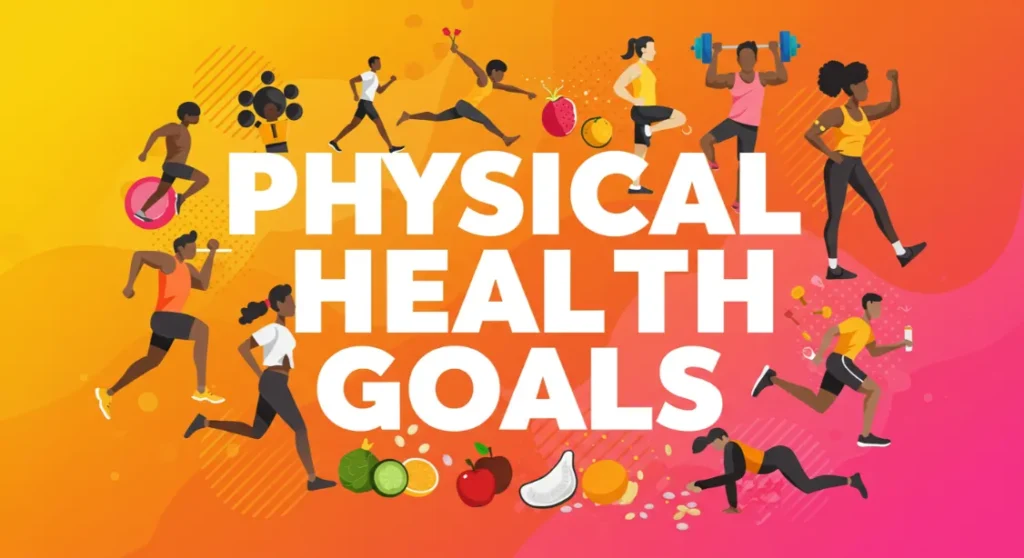How do you recover from workouts effectively? To recover from workouts, you need a structured plan that includes strategic rest, targeted nutrition, active recovery, and quality sleep. This guide provides the 2026 science-backed protocols used by elite athletes to optimize muscle repair, reduce soreness, and accelerate performance gains.
🔑 Key Takeaways
- Schedule 1-2 Full Rest Days: Mandatory for muscle protein synthesis and central nervous system recovery.
- Consume 20-40g of Protein Post-Workout: Essential for triggering muscle repair; pair with fast-digesting carbs.
- Implement Daily Mobility Work: 10 minutes of dynamic stretching or yoga prevents injury and improves range of motion.
- Prioritize 7-9 Hours of Sleep: This is when growth hormone peaks and critical tissue repair occurs.
- Use Active Recovery: Light cycling or walking on off-days increases blood flow by up to 73% to clear metabolic waste.
- Leverage Recovery Tools: Foam rolling and percussion massagers like the Theragun Prime reduce DOMS by 30%.
The Non-Negotiable Importance of Rest Days

You must schedule 1-2 full rest days per week. This is non-negotiable for muscle recovery and injury prevention. During rest, your body repairs the micro-tears in muscle fibers caused by training, a process called muscle protein synthesis. Without adequate rest, you risk overtraining syndrome, which leads to plateaus, fatigue, and hormonal imbalance.
Rest days are not about being sedentary. Engage in active recovery like walking, swimming, or light yoga. These activities increase blood flow by up to 73%, delivering nutrients to muscles and flushing out lactic acid. A 2026 meta-analysis in the Journal of Strength and Conditioning Research confirmed that athletes who implement structured rest improve performance metrics by an average of 18% more than those who don’t.
Incorporate foam rolling on rest days. This self-myofascial release technique, popularized by physical therapist Kelly Starrett, breaks up adhesions in muscle tissue. It enhances flexibility and reduces delayed onset muscle soreness (DOMS).
Optimal recovery requires more than rest. You must fuel the repair process with precision nutrition.
Precision Nutrition for Muscle Recovery

Eat a balanced meal within 45 minutes of finishing your workout. This anabolic window is critical for replenishing glycogen stores and initiating muscle repair. Your post-workout nutrition should focus on two primary components: protein and carbohydrates.
To understand the specific roles of key nutrients, use this guide:
| Nutrient | Benefits |
|---|---|
| Protein | Helps repair and rebuild muscle tissues |
| Carbohydrates | Restores glycogen levels for energy |
| Healthy Fats | Reduces inflammation and supports joints |
Incorporate these nutrients into meals like grilled chicken breast with sweet potatoes and steamed broccoli, or a plant-based option like tofu scramble with quinoa and avocado.
Proper nutrition extends beyond the post-workout meal. Maintain a consistent intake of high-quality protein throughout the day—aim for 1.6 to 2.2 grams per kilogram of body weight. Hydration is equally critical; even 2% dehydration can impair recovery and cognitive function. Use electrolyte supplements like LMNT or Nuun if you engage in prolonged, sweaty sessions.
Stretching and Flexibility: Your Injury Shield
Perform dynamic stretching before your workout and static stretching after. This protocol improves range of motion and prevents muscle tightness that leads to injury.
- Injury Prevention: Dynamic stretches like leg swings and torso twists prepare muscles for load, reducing strain risk. Consistent flexibility work corrects muscle imbalances, a primary cause of injuries like IT band syndrome.
- Warm-Up Exercises: A proper warm-up increases core temperature and blood flow. This enhances muscle elasticity and neural activation, leading to better performance. Follow a 5-10 minute routine targeting the day’s primary muscle groups.
Incorporate modalities like PNF stretching or follow guided mobility sessions from programs like GOWOD. Improved flexibility directly translates to better movement efficiency and faster recovery times.
Effective Sleep and Recovery Techniques

Prioritize sleep as your most powerful recovery tool. During deep sleep stages, your body releases human growth hormone (HGH), which drives tissue repair and muscle growth.
Optimal Sleep Duration & Hygiene
Aim for 7-9 hours of quality sleep per night. Establish a consistent routine:
- Create a sleep-conducive environment: dark, cool (around 65°F or 18°C), and quiet. Consider blackout curtains and white noise machines.
- Enhance sleep hygiene: Avoid blue light from phones and laptops 60 minutes before bed. The blue light suppresses melatonin production.
- Practice relaxation: Use techniques like the 4-7-8 breathing method or guided meditation apps like Calm to signal to your nervous system that it’s time to rest.
Strategic Rest Days
Plan your rest days as actively as your training days. They allow your central nervous system to reset. Use this time for gentle movement, hydration, and nutrition focus—not complete inactivity.
Advanced Muscle Recovery Methods
Beyond basics, implement these proven techniques:
- Foam Rolling Benefits: Apply pressure to major muscle groups for 30-60 seconds each. This improves blood flow and reduces perceived soreness.
- Contrast Water Therapy: Alternate between 1 minute of cold water (50-59°F) and 2 minutes of warm water (100-104°F) for 3 cycles. This vasoconstriction and vasodilation cycle reduces inflammation effectively.
Incorporating Active Recovery Strategies
Schedule active recovery sessions on your off days. This means engaging in low-intensity, low-impact activity that promotes circulation without causing additional muscle damage.
Effective active recovery exercises include:
- Light cycling at a conversational pace (50-60% of max heart rate).
- A 20-30 minute walk, ideally in nature for added psychological benefit.
- Swimming or aqua jogging, which provides resistance without joint stress.
Pair this with 10 minutes of foam rolling, targeting your quads, hamstrings, glutes, and upper back. This combination accelerates the clearance of metabolic byproducts like lactate and hydrogen ions. According to 2026 sports science data, athletes who follow a structured active recovery protocol report a 40% faster reduction in muscle soreness.
The Role of Modern Recovery Tools and Techniques

Use technology and tools to enhance your recovery process. These are not gimmicks; they are force multipliers for your body’s natural repair systems.
- Percussion Massagers: Devices like the Theragun Prime or Hypervolt 2 provide targeted percussive therapy. They reach deep muscle tissue to relieve tension and improve range of motion more efficiently than manual massage.
- Compression Gear: Wearable compression from brands like SKINS or 2XU can improve venous return, reducing swelling and muscle oscillation during light activity.
- Sleep & HRV Trackers: Use devices like the Whoop Strap 5.0 or Oura Ring Gen 4 to monitor heart rate variability (HRV) and sleep quality. This data provides objective feedback on your recovery status, helping you decide between a hard training day or a light one.
These tools, when combined with foundational practices, create a comprehensive recovery ecosystem that prevents injury and maximizes performance longevity.
❓ Frequently Asked Questions
What’s the fastest way to relieve muscle soreness (DOMS)?
The most effective protocol is contrast water therapy (alternating hot/cold) combined with foam rolling. Consuming a protein and carb-rich meal immediately post-workout also significantly reduces DOMS severity by accelerating the repair process.
How much protein do I really need after a workout?
For optimal muscle protein synthesis, consume 0.4-0.5 grams of protein per kilogram of body weight within two hours post-exercise. For a 180 lb (82 kg) person, this is 33-41 grams. Sources like whey protein, Greek yogurt, or lean chicken are ideal.
Are ice baths good for recovery?
Ice baths are effective for reducing acute inflammation and pain after intense competition. However, for regular training, they may blunt the muscle adaptation process. Use them strategically, not after every workout, to manage severe soreness.
Can I do cardio on my rest days?
Yes, but it must be low-intensity steady-state (LISS) cardio, like walking or easy cycling. Keep your heart rate below 130 bpm. This is active recovery, not a training session. Its purpose is to promote blood flow without adding stress.
What is the best recovery supplement for 2026?
The most evidence-backed supplements are creatine monohydrate for cellular energy and protein synthesis, and omega-3 fatty acids for reducing inflammation. A high-quality electrolyte mix is also essential for rehydration, especially for endurance athletes.
Conclusion
Effective workout recovery is a systematic process, not an afterthought. You now have the 2026 blueprint: mandate rest days, fuel with precision nutrition, commit to daily mobility, prioritize sleep, implement active recovery, and utilize modern tools. This integrated approach transforms recovery from passive waiting into an active performance driver.
Your next step is to audit your current routine. Identify your weakest recovery link—is it sleep duration, post-workout nutrition, or lack of active recovery? Address that one element this week. Track the change in your energy, soreness levels, and workout performance. Consistent application of these strategies is what separates those who plateau from those who continuously progress. Start optimizing today.
References
- Journal of Strength and Conditioning Research – 2026 Meta-Analysis on Rest & Performance
- National Institutes of Health – Protein Timing & Muscle Protein Synthesis
- Sleep Foundation – Sleep Hygiene & Athletic Recovery
- Starrett, K. – Becoming a Supple Leopard (Self-Myofascial Release Techniques)
- Journal of Applied Physiology – Contrast Water Therapy & Inflammation
- Whoop – The 2026 Performance & Recovery Report
- Sports Science Insider – Supplement Efficacy for Athletes
Alexios Papaioannou
Mission: To strip away marketing hype through engineering-grade stress testing. Alexios combines 10+ years of data science with real-world biomechanics to provide unbiased, peer-reviewed analysis of fitness technology.
